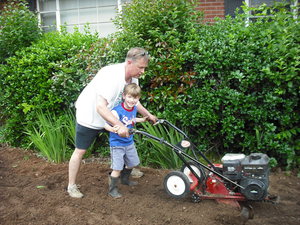Therapy dogs are animals who are trained for a specific purpose to help those who are in need or for those who need some comfort. Therapy dogs are used in nursing homes, hospitals, retirement homes, schools, disaster areas where there are a multitude of problems. These dogs that have been trained specifically for this purpose provide a help that no other dog or animal can ever hope to provide.
Elaine Smith is the one person, an American and a nurse who was registered in England, who is given the credit for coming up with the idea of Therapy dogs. She observed how patients reacted favorably when a Chaplin who would arrive with his dog, who was a Golden Retriever. She would return in 1976 to the United States she would put forth a program for dogs to be sought out, checked for a certain personality and temperament, and trained to become dogs who would help in the therapy of patients in different areas of the medical field.
As time passed, other people in the medical field would see the benefits and the curative effects that the visiting animals had on patients, the companionship, and what they did for patients and people who had numerous health problems. They noticed that the dogs also helped people who were depressed and numerous other emotional problems. So, the requirements for these dogs become more urgent and desirable. It has been in the last few years that these dogs have been used to help children with the numerous emotional and physical problems that were had. This kind of therapy has now comprised to bring in cats, rabbits, and even birds.
All sizes and breeds of dogs are included to be therapy dogs. One of the most important aspects for a dog to be considered for this field is their temperament. They must have a patient, friendly, confidence, have an ease in any situation, and above all, have a gentle air about them. They also must have that capability to enjoy or want to be around humans and the contact. They must have the temperament to be assent to handled and petted, sometimes not with the greatest of ease.
His chief goal is the allowance of people that he doesn’t know to come in contact with and have the joy of human contact. The dog must have the patience when children are around them and do what children do naturally when they come in contact with dogs. There is also that possibility that if the dog is small, to have to be put in someone’s lap. Or the dog who is not a natural at doing things that dogs sometime normally do, like lap dogs, and so forth. If someone is bedridden, the dog will have to learn to get into the bed also and lay beside them and let the person be able to pet them. Many dogs are taught tricks and other things in order to make the experience more enjoyable.
One of the greatest significances is that these dogs are not service dogs. Therapy dogs do not do what service dogs do and that is to directly assist their humans. Therapy dogs do not to do this and they have no legal rights, but they do have that right to be asked to places that they want to visit. Some medical places have some stringent requirements for dogs that are used for therapy. To become a therapy dog, the dog must pass rigorous testing and have accreditation. They have many requirements for these animals in order to become a therapy dog. Once they pass these tests and requirements, then they are able to do what they are trained to do and become something for those who need the contact the most.
http://www.animalloverworld.com/dogs/Therapy_dog.html





